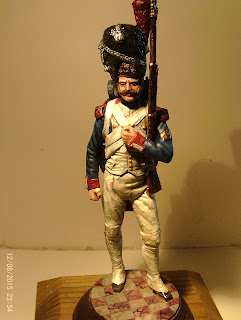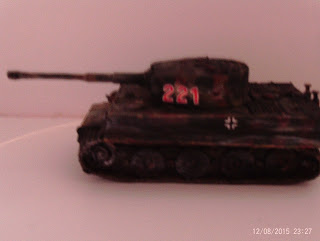Rather than lamenting inability to take part in the Holy Holly Day celebrations commemorating the Battle of Nantwich 1644 today, I feel it is time for another showcase. So as many of you might know, the 17th century and in particular
The English Civil Wars are my favourite period of history and certainly the
period I wargame the most. I research, am just finishing writing a book on
the period, I reenact it, it is the period to which I feel I am an authority
on. Therefore do not be surprised if in coming posts there is a predisposition
for lots of 17th century material.
A quick note on photo's, still having
issues with lighting and exposure-winter in Scotland does not make for the best
framing of shots. Certainly for my part, I feel some of the issue is with the
image resolution rating, will from now on be raised to 18megapixels to
make the best use of zoom focus and detail. Obviously at the moment this is a
try and test method;we all want good looking miniatures, so photography is very
much an uphill battle. If any followers want to further show me some free photo
editing software available online, would be more than appreciated.



Petard and Petardiers Assistant, 28mm Foundry
2 Scots Frame Guns from Warlord Games.
The start of what I hope to be the next 17th century project after ECW is concluded (for the moment) and Zulu War. Wargaming the Covenanter/Pentland Risings 1666-71. What is so good about the period is that uniforms and units making up the Scots Government army are virtually the same as those at Sedgemoor in 1685, thus killing two birds with one stone, while also adding a couple of Scots Militia/Highlanders to the mix (as seen in the lower of the above). I'm not sure about doing Covenanter/Monmouth rebels for the period, as so few manufacturers make them, with little or no variation in pose. What I might do is go down the root that Wargames, Soldiers and Strategy did for their Glorious Revolution issue (and the Sealed Knot for every Sedgemoor reenactment) and use ECW armies and just buy available rebel figures to mix in. What are your thoughts? Top Royal Regiment of Dragoons. 28mm North Star 1672
Leslie's Lifeguard, Cuirassiers (possibly previously in Swedish service as Argyle was also listed in one source as having a Cuirassier Lifeguard). 28mm Warlord Games
28mm Bicorne Miniatures Frame Gun. Quite possibly my favourite ECW manufacturer, I think I shall be coming to them for a large amount of my next purchases. Tons of character, paint up beautifully (although not sure the photos do them justice. Brilliant.
28mm Warlord Games Covenanters (with some Renegade and Foundry thrown in). Slowly but surely my Scots armies coming together. You might quite a few of them are dressed in red coats, which is quite unusual for Scots armies. Obviously
when looking through the battlefield histories such as Auldearn and Kilsyth we
come upon units such as Home’s Regiment of Redcoats, a supposed penal regiment
that had yet to shed their British army for Scotland Coats, or indeed Sir
Arthur Erskine of Scotscraigs Regiment, that did not have the required money,
nor clothing issue of the period, so instead relied upon dressing their troops
in black police vestments, or alternatively Argyle’s own regiment, based upon a
black coat with red breeches, based upon his family livery, a factor carried on
into many Campbell regiments. By corroborating and going through Covenant
troops that served in Ireland from 1640-6 shows that in actual fact at least
five known regiments wearing such coats. But if we also equally look at
regimental returns , we can also ascertain pay was largely withheld during the
Irish campaign, a factor Project Auldearn blog (a first class resource for
anyone wishing to wargame Montrose’s rebellion) highlights by retaining 1/3 of
all troops in redcoated regiments in grey/ragged coats. Therefore the objective
of such an article would be to highlight the ability and need for
differentiation, change and difference within Monro’s and ultimately the Scots
Government Army during the 1640’s. The incorporation of Irish loyalist troops
into their mix and some regiments, particularly Argyle’s retaining partial
Highland folk dress argues the point that in terms of makeup, the Covenanter
army was very similar to that fielded by Montrose.
Painted up using the Army Painter method (although I use watered down Cuprinol, its cheaper, generally does the same job, except for a gelling agent) I think in the flesh they really do the job and will look really impressive when they finally get on the gaming table soon.
All for now, next time possibly a book review.
















































